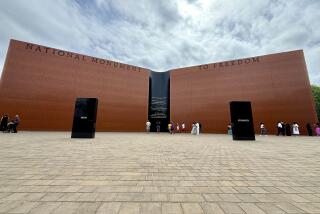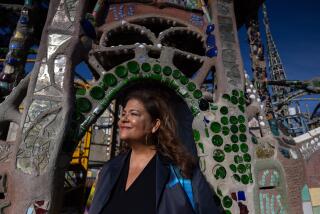The Lighted Lamp of Emma Lazarus
Buried in the history of the Statue of Liberty is the story of a woman named Emma Lazarus. She is part of the history because of her authorship of these words: “Give me your tired, your poor, Your huddled masses yearning to breathe free. The wretched refuse of your teeming shore. Send these, the homeless, tempest-tost to me, I lift my lamp beside the golden door!”
Just who was Emma Lazarus, and how did her sonnet, “The New Colossus,” come to be part of the monument and change its meaning?
Emma was an American Jew, born in New York City in 1849, who grew up privileged and sheltered. She knew little of poverty, slavery or anti-Semitism. What she did know was poetry, the classics and the works of the transcendentalists.
Emma’s early poems, melodramatic adolescent musings, were privately printed by her devoted father for family members. But her first volume also found its way into the hands of one of her idols, Ralph Waldo Emerson, who, on meeting her, kindly offered to read her work and gave her his address in Concord. This began a long correspondence, and Emerson, who guided many a literary aspirant, added young Emma to his list of proteges.
After years of friendship, though, he abandoned her, leaving the reclusive Emma, now approaching her 30s, seriously reflecting on her life’s purpose. A literary friend suggested that there was a wealth in her Jewish heritage. She responded that, while she was proud of her religion and ancestry, she considered herself more an American than a Jew.
Events in Russia changed that view. The year 1881 saw a new rage of anti-Semitism so violent that the world had trouble comprehending it. In city after city Cossack soldiers destroyed Jewish districts, burning homes and synagogues, murdering and terrifying the people.
Jews by the thousands set sail for America. An acquaintance of Emma who was active in the Hebrew Emigrant Aid Society brought a group of women, including Emma, to visit the temporary housing facility, Ward’s Island, to see “the wretched fugitives . . . the victims of Russian barbarity.”
The refined, sheltered Emma was shocked and profoundly moved by what she saw. Immediately she threw herself into helping the refugees. She overcame her shyness to arrange meetings that led to the establishment of a trade school for boys. But her real strength was in the power of her pen. She became a regular contributor to newspapers and periodicals, writing not only impassioned poetry but strong editorials and controversial letters as well.
For two years she worked hard and then traveled abroad for the first time. On her return to New York, she found clamor and confusion over the building of a pedestal in New York Harbor.
France was about to present America with a statue called “Liberty Enlightening the World,” and America was to provide the pedestal. Publisher Joseph Pulitzer raised the country’s conscience with a relentless fund-raising campaign in his newspapers. The final sum necessary to complete the pedestal came from an auction of literary works by luminaries including Mark Twain, Walt Whitman and John Burroughs.
Emma Lazarus was approached to contribute a poem. She thought of the Colossus of Rhodes, a huge bronze statue of the sun god Helios, built in an Aegean harbor in ancient times. Now America would have a monument at its gateway that would welcome all people. She wrote “The New Colossus.” The portfolio went to the highest bidder for $1,500.
In October, 1886, the statue was dedicated, but Emma was not at the ceremony. She was gravely ill with cancer. She died Nov. 19, 1887, at the age of 38.
Her sonnet was not forgotten, thanks to Georgina Schuyler, a patroness of the arts. One day in 1903 she was browsing in a used-book store and came across a dusty portfolio. A sonnet, “The New Colossus,” in which the poet called the statue the “Mother of Exiles,” struck her as a verse that would add lasting meaning to the monument. She arranged for the last five lines to be inscribed on a plaque and hung inside the pedestal. On that ordinary day, with no fanfare, Frederic Auguste Bartholdi’s sculpture and Emma Lazarus’ inspired words were united, together a monument that continues to stir us all.
More to Read
Sign up for our Book Club newsletter
Get the latest news, events and more from the Los Angeles Times Book Club, and help us get L.A. reading and talking.
You may occasionally receive promotional content from the Los Angeles Times.








